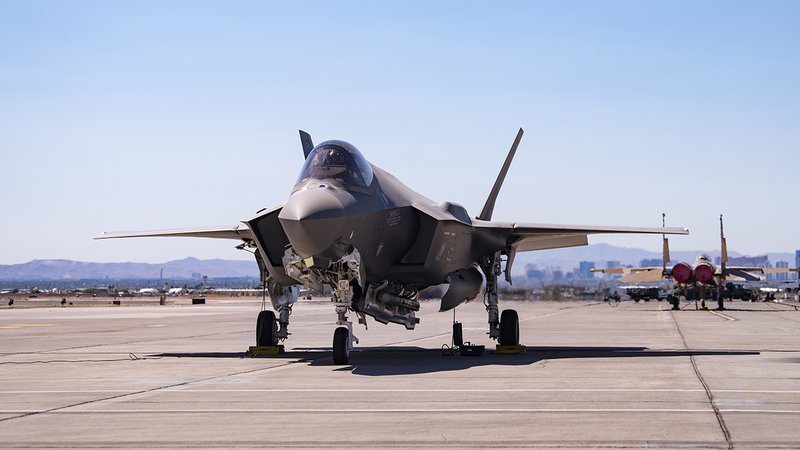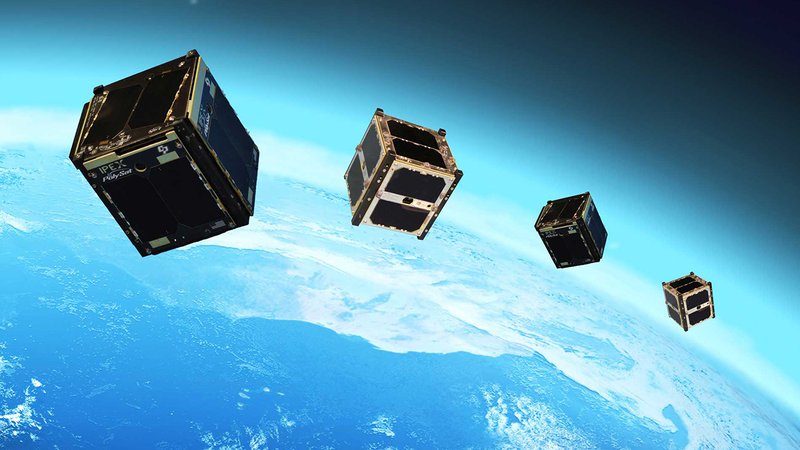Domain deferral – does moving airborne capabilities to space make sense as new orbital weapons emerge?
From nuclear weapons to tactical ISR, the balance may be shifting towards larger militaries favouring space-based sensors and effectors over their air-platformed counterparts. But does this just kick problems from the battlefield into orbit?
One of the notable features of the Ukrainian war has been the widespread Russian use of stand-off weapons, varying from relatively basic ‘suicide drones’ (essentially rudimentary cruise missiles), through to more traditional long-range air-launched munitions... Continues below
Newsletter Sponsors:

Above: The F-35 and B61 combination is likely to be an effective one should circumstances ever warrant its use, but a potential extension of the nuclear triad into space will inevitably complicate matters. (Photo: USAF)
With Ukrainian defences improving and a concurrent rise in Moscow’s losses, pulling missile carrier aircraft and hence launch points further away from the front line has made sense for Russian aviation units, albeit at the cost of range and precision.
A variety of steering mechanisms are used for these weapons, including aircraft-mounted as well as organic targeting and, particularly in the case of equivalent NATO systems, satellite guidance that is relatively difficult to obstruct.
While NATO and allied systems are largely considered superior to Russian equivalents, these factors are nevertheless an important lesson in managing aerial weapons and the challenges that must be faced. Multi-faceted air defence has climbed rapidly up the priority list, but it only reaches so far.

In February 2024, the F-35 was reportedly cleared for use of the B61-12 unpowered nuclear weapon. Although when compared with the standoff systems listed above this seems like a step in the opposite direction, the mating of a relatively low-technology but fairly independent device with the F-35’s low RCS and high data fusion capability means that it is more likely that the package could penetrate enemy airspace effectively enough for success.
The Royal Netherlands Air Force has made somewhat vague remarks about its aircraft’s certification for this capability and USAF examples are likely to be based at facilities where a nuclear storage capability exists, with Germany, the Netherlands, Turkey and the UK being of historic importance in this field.
The development of new nuclear air-launched weapons is relatively limited as a field of focus and among Western militaries the US is essentially the only supplier.
Russian forces have used non-nuclear variants of the Kh-55/Kh-101 over Ukraine and China has reportedly a few examples, purchased – somewhat ironically – from Ukraine. This complements, in Russian hands, a large collection of sea- and ground-launched, nuclear-capable missiles and various future hypersonic weapons, although whether the latter will actually come to fruition remains unclear.
Recently, documents seen by news sources have suggested that Russia views losses of major conventional assets (such as surface warships) to large but conventional weapons as the basis for consideration of a nuclear strike on the West.
In the other direction, the US is apparently mulling a return to multiple warheads (MIRVs) on its own ground-based missiles. The nuclear domain is awakening, ominously, from its previous slumber.
Concurrent with this has been an unexpected media release from the US government concerning a suspected Russian ‘nuclear’ anti-satellite (but probably not bombardment) weapon in low earth orbit.

The subject remains obscured by a lack of definitive information on what this capability might be, and nuclear-powered as well as nuclear-armed have both been suggested, with the former allowing a higher degree of manoeuvrability and the latter an area-effect weapons against US and other satellites.
Such a threat is, unsurprisingly, being taken extremely seriously and is both widening the domain of nuclear competition and closing the loop on the range of systems used. Indeed, detection of a nuclear launch and coordination of the response is dependent upon SATCOM functionality.
Nuclear effects have now, it seems, ascended from their underground silos, through submarine and air launches into space. It was arguably only a matter of time before a fourth leg extended the triad, but post-Cold War adherence to disarmament treaties had seemed to delay such a move.
The gloves have now definitely been discarded. Suddenly, the F-35’s seemingly basic B61-12 capability appears quite useful as it can rely on the aircraft’s own radar for targeting rather than a GPS or equivalent.
Other articles in this newsletter:
Rotary reversal – what does FARA cancellation mean for the US Army and its NATO allies?
Strategic shake-up – plotting a new course for the USAF
There is an interesting link here with the US Army’s recent cancellation of its new attack/reconnaissance helicopter programme (FARA), citing developments seen in Ukraine as indicating that the traditional role of such aircraft was no longer viable.
This was a surprising move, given that this and sister efforts such as the V-280 appeared to be enjoying significant momentum. As an alternative to the attack helicopter – a capability in which other users remain confident – the US stressed a multi-domain approach to ISR, with emphasis on uncrewed land and air systems as well as strong support from satellites or new extra-atmospheric systems (such as networks of ‘CubeSat’ small reconnaissance units).
While the chronology preludes it being a direct reaction, the putative new Russian system does threaten sharply this move to a multi-domain approach. A variety of air defence weapons could have shot down FARA, but it takes something new to knock out a satellite constellation.

Above: One of the advantages of using ‘CubeSat’-style constellations for tactical ISR is that they are harder to neutralise than aircraft flying over the battlefield. New space-based weapons may cause a rethink on that front. (Image: NASA)
Whether or not this Russian system is what various bodies suspect, how it functions and what it might do remains open to debate. China, North Korean and Iran have at various times been suspected of ambitions for space-based weaponry, although only the former is likely to have achieved much.
But the last two years have marked a widening of use and users of multi-domain air- and ground-launched weapons, and the extension to space as a new theatre has come as yet another headache for Western military planners.
Nuclear concerns are nothing new, but just as space seemed to be ideal for a new and conventional capability as an alternative to higher-risk, low-level operations, a new counter-system appears to be reaching the level of a serious threat.
Don't want to miss out on future Decisive Edge content? Make sure you are signed up to our email newsletters.












